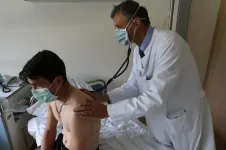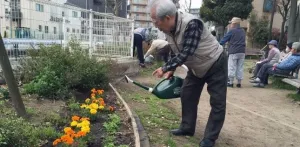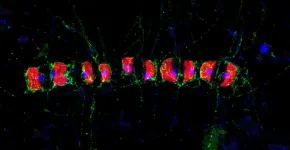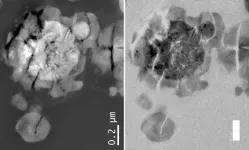Deep brain stimulation prevents epileptic seizures in mouse model
Experimental approach reveals new avenues for treating people with drug-resistant epilepsy
2021-02-19
(Press-News.org) Epileptic activity originating from one or more diseased brain regions in the temporal lobe is difficult to contain. Many patients with so-called temporal lobe epilepsy often do not respond to treatment with anti-epileptic drugs, and the affected brain areas must therefore be surgically removed. Unfortunately, this procedure only gives seizure freedom to about one third of patients, so the development of alternative therapeutic approaches is of great importance. Scientists led by neurobiologist Prof. Dr. Carola Haas, head of the research group at the Department of Neurosurgery at Medical Center - University of Freiburg and the BrainLinks-BrainTools research center, have investigated a new therapeutic approach to prevent epileptic seizures in temporal lobe epilepsy. They showed in mice that low-frequency stimulation of specific brain areas could completely stop epileptic activity. Instead of using electric current, the researchers stimulated the cells with light. To do this, they had previously introduced a light-sensitive molecule into the cells that allows particularly precise stimulation. They published the results in December 2020 in the scientific journal elife.
"As soon as we stimulated the brain region with a frequency of one hertz, the epileptic seizures disappeared. This effect was stable over several weeks," Haas says. Habituation, which can occur with drug therapy, did not take place. The brain region was stimulated for one hour daily.
Circuits and cells identified
In temporal lobe epilepsy, the hippocampus is often pathologically altered and usually represents the so-called focus of epileptic activity. Previous studies have used precise genetic labeling techniques to map the fiber system and its synaptic contacts between the temporal lobe and hippocampus, which are typically preserved in temporal lobe epilepsy. The researchers used this fiber system to manipulate hippocampal activity in a specific and temporally precise manner using light-dependent proteins. Measuring brain waves showed that rhythmic activation of the diseased hippocampus at a low frequency of one hertz suppressed epileptic activity and prevented it from spreading.
Haas and her colleagues demonstrated that the anti-epileptic effect is largely due to the repeated activation of surviving granule cells in the seizure focus. Single cell studies confirmed the assumption that the granule cells are less excitable due to the stimulation, making the epileptic seizure less likely to spread. "It's also possible that we have a widespread network effect because the stimulation can spread through the hippocampal circuitry," Haas said.
In the future, the team, along with the medical physics department at the Medical Center - University of Freiburg, would like to use magnetic resonance imaging to observe the entire brain during stimulation. This technique could be used to identify additional brain regions that are affected by the stimulation. Corresponding findings on these could provide information on how they are connected and what further consequences stimulation has.
INFORMATION:
Original title of study: Hippocampal low-frequency stimulation prevents seizure generation in a mouse model of mesial temporal lobe epilepsy.
[Attachments] See images for this press release:
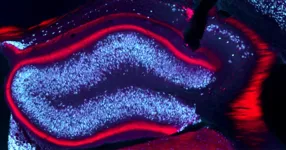
ELSE PRESS RELEASES FROM THIS DATE:
2021-02-19
The major direct and indirect effects of covid-19 have forced the authorities to implement policies that strike a balance between minimizing the immediate health impact of the pandemic and containing the long-term damage to society arising from protective policies.
One parameter that is crucial for calculating how restrictive policies might be warranted is the mortality impact of covid-19, which has led to large-scale international collaborations in order to collect data that records deaths attributable to the pandemic.
Despite the limitations, each of these research avenues and associated health measures (infection rate, deaths and excess deaths) is important in order to inform the public and policymakers about the mortality impact of covid-19.
"Our results confirm that the mortality ...
2021-02-19
When can tuberculosis therapy be stopped without risk of relapse? Doctors are faced with this question time and again, because the lack of detection of the tuberculosis pathogen Mycobacterium tuberculosis is no guarantee for a permanent cure of the lung infection. Patients who respond to the standard therapy may be out of treatment after six months. But for resistant cases, more than 18 months of treatment duration is currently advised. "This is a very long time for those affected, who often have to take more than four antibiotics every day and suffer from side effects", explains Prof. Dr. Christoph Lange, Clinical Director at the Research Center Borstel and director of the study, conducted at the German Center for Infection Research (DZIF) in cooperation with the German Center for ...
2021-02-19
A group of researchers has developed a new program showing participation and activity is critical for the rehabilitation of older adults in long-term care.
The results of their research were published in the journal PLOS ONE on February 12, 2021.
"Our study shows participatory programs that encourage elderly patients to be active need greater emphasis in elderly care centers," said Yoshihiko Baba, lead author of the study.
In 2015, the Ministry of Health, Labour and Welfare of Japan launched a comprehensive plan to care for the country's aging population. Crucial to this was rehabilitation centered on promoting activities that elderly patients could actively take part in.
Baba, a former ...
2021-02-19
Although amber looks like a somewhat unusual inorganic mineral, it is actually derived from an organic source - tree resins. Millions of years ago, when this aromatic and sticky substance was slowly oozing from coniferous trees, insects and other biological material could become trapped in it. That is why some samples of amber contain fossilized specimens, preserved in a virtually pristine state, which afford fascinating snapshots of the flora and fauna of long-gone forests. Now, a research team led by LMU zoologists Viktor Baranov and Joachim Haug has made exciting ...
2021-02-19
Semi-trucks and other heavy-duty vehicles are responsible for nearly half of road transportation carbon dioxide emissions in Europe, according to the International Council on Clean Transportation. A team of researchers in Italy has proposed a plan to reduce the emissions without compromising priorities such as delivery times. They published their approach in IEEE/CAA Journal of Automatica Sinica, a joint publication of the IEEE and the Chinese Association of Automation.
"Driving style, traffic and weather conditions have a significant impact on vehicle fuel consumption. Road freight traffic, in particular, contributes ...
2021-02-19
A major pathway for carbon sequestration in the ocean is the growth, aggregation and sinking of phytoplankton - unicellular microalgae like diatoms. Just like plants on land, phytoplankton sequester carbon from atmospheric carbon dioxide. When algae cells aggregate, they sink and take the sequestered carbon with them to the ocean floor. This so called biological carbon pump accounts for about 70 per cent of the annual global carbon export to the deep ocean. Estimated 25 to 40 per cent of carbon dioxide from fossil fuel burning emitted by humans may have been transported by this process from the atmosphere to depths below 1000 meter, where carbon can be stored for millennia. ...
2021-02-19
Early Mars is considered as an environment where life could possibly have existed. There was a time in the geological history of Mars when it could have been very similar to Earth and harbored life as we know it. In opposite to the current Mars conditions, bodies of liquid water, warmer temperature, and higher atmospheric pressure could have existed in Mars' early history. Potential early forms of life on Mars should have been able to use accessible inventories of the red planet: derive energy from inorganic mineral sources and transform CO2 into biomass. Such living entities are rock-eating microorganisms, called "chemolithotrophs", which ...
2021-02-19
The ability to speak is one of the essential characteristics that distinguishes humans from other animals. Many people would probably intuitively equate speech and language. However, cognitive science research on sign languages since the 1960s paints a different picture: Today it is clear, sign languages are fully autonomous languages and have a complex organization on several linguistic levels such as grammar and meaning. Previous studies on the processing of sign language in the human brain had already found some similarities and also differences between sign ...
2021-02-19
The last complete reversal of the Earth's magnetic field, the so-called Laschamps event, took place 42,000 years ago. Radiocarbon analyses of the remains of kauri trees from New Zealand now make it possible for the first time to precisely time and analyse this event and its associated effects, as well as to calibrate geological archives such as sediment and ice cores from this period. Simulations based on this show that the strong reduction of the magnetic field had considerable effects in the Earth's atmosphere. This is shown by an international team led by Chris Turney from the Australian University of New South Wales, with the participation of Norbert Nowaczyk from the German Research Centre for ...
2021-02-19
Researchers at Tampere University have successfully used artificial intelligence to predict nonlinear dynamics that take place when ultrashort light pulses interact with matter. This novel solution can be used for efficient and fast numerical modelling, for example, in imaging, manufacturing and surgery. The findings were published in the prestigious Nature Machine Intelligence journal.
Artificial intelligence can distinguish different types of laser pulse propagation, just as it recognizes subtle differences of expression in facial recognition. The newly found solution can make it simpler to design experiments in fundamental research and will allow algorithms ...
LAST 30 PRESS RELEASES:
[Press-News.org] Deep brain stimulation prevents epileptic seizures in mouse model
Experimental approach reveals new avenues for treating people with drug-resistant epilepsy

